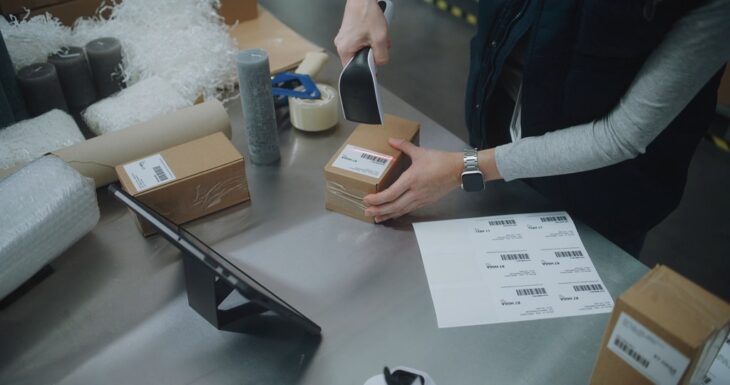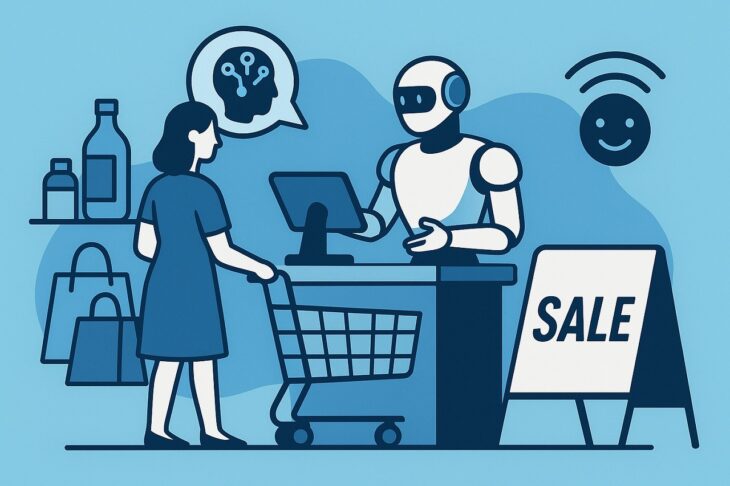Retail has never been a set-it-and-forget-it business. Tastes shift. Trends fade. One viral video can make a product sell out in hours. And amid all that unpredictability, there’s one thing retailers keep hearing more and more about: artificial intelligence.
Now, AI isn’t some distant tech reserved for big-box giants with sprawling R&D budgets. It’s quietly working behind the scenes at your favorite fashion app, the corner convenience store, and that boutique shop online you found through a targeted ad.
Retail automation is reshaping how customers shop, how brands respond, and how entire operations run from shelf to warehouse.
Let’s take a closer look at how AI is actually improving the customer experience – not just in theory, but in the ways real people feel it.
Key Highlights
- AI boosts personalization by analyzing behavior to suggest products, prices, and marketing tailored to each shopper.
- Customer service gets faster and smarter with chatbots handling routine questions and AI routing complex issues to humans.
- Operations run smoother through AI-driven inventory, cashierless checkout, and optimized deliveries.
- Sustainability improves as AI helps reduce waste, promote second-hand shopping, and track product carbon footprints.
Personalization

Retail used to be about gut instinct and best guesses. Now, it’s about precision. AI’s talent for analyzing enormous amounts of data, like past purchases, browsing habits, wishlist items, and even how long someone hesitates on a product page, lets retailers create experiences that feel, well, personal.
Think about product suggestions like “Complete the look” or “You might also like.” That’s not just convenient; it’s AI anticipating what you’re likely to love next.
Retailers such as Vaayu have taken it a step further by suggesting not only what matches your style, but what has a lower environmental impact. That resonates with shoppers looking to make greener choices.
Then there’s Vestiaire Collective, where AI connects users with high-quality second-hand fashion. By analyzing price trends and wear patterns, the platform can promote pre-loved items that are up to 33% cheaper than new ones, while making sure the suggestions still fit your vibe.
Here’s how personalization breaks down in practice:
| Personalization Aspect | What It Does | Example |
| Product Recommendations | Suggests items you’re likely to want | “Shop the look” add-ons on fashion sites |
| Dynamic Pricing | Adapts pricing based on behavior or demand | Special discounts for repeat buyers |
| Targeted Marketing | Tailors emails and ads to your actual interests | Curated product lists in weekly promo emails |
Customer Service

You’ve got a question. It’s 9:42 p.m. You’re staring at your screen debating a skincare serum. You click the little chat icon, and within seconds, there’s help.
That’s AI-powered customer service doing its job. Virtual assistants and chatbots can answer common questions, guide you through product selection, help with returns, and track packages, all without you waiting for “the next available representative.”
Sephora’s AI chatbot is a great example. It offers real skincare advice, not just canned replies. It can learn from how people interact and improve over time. And that’s what sets modern retail automation apart: it adapts.
The numbers show people are open to it:
- 54% of shoppers say they’re comfortable using AI chatbots during purchases
- 47% are already using AI tools to research products before buying
A recent Attest survey from 2025 found that 58.3% of consumers believe brands adopting AI risk the loss of the human touch, and nearly 55% fear they’ll be unable to speak to a real person when interacting with businesses.
So smart retailers are using AI to enhance human support, not erase it. For instance, bots handle routine tasks, while more complex or emotional issues get routed to trained staff.
Customer service upgrades made possible by AI include:
| Feature | AI Function | Customer Benefit |
| 24/7 Availability | Chatbots provide constant support | Quick help, any time |
| Proactive Help | Predictive tools suggest next steps or items | Smart reordering or support before problems hit |
| Language Coverage | NLP enables multilingual communication | Makes support more accessible worldwide |
Operational Efficiency

You might not see it, but AI is often the reason your favorite item is still in stock or why your package shows up early. From forecasting demand to managing shelf space, AI keeps the retail engine humming.
Amazon Go stores are a standout. Using computer vision and AI, shoppers can grab what they want and walk out. No lines. No checkouts. Everything gets billed automatically. That’s retail automation in full swing, and it’s incredibly customer-friendly.
Many of the behind-the-scenes gains, like automatic reordering and stock reconciliation, are powered by RPA development services that handle repetitive tasks at scale.
Smart shelves and automated inventory systems track what’s running low and send alerts before restocking becomes a problem. In traditional stores, that means fewer “Sorry, we’re out” moments. In warehouses, it means faster shipping and smoother returns.
Real-time insights also help stores adjust promotions quickly if a product suddenly starts trending or inventory is running low.
Here’s a snapshot of where AI improves operations:
| Operational Area | AI Application | Customer Win |
| Inventory | Predicts which items to restock | Less chance of items being unavailable |
| Supply Chain | Optimizes shipping and delivery | Faster, more reliable deliveries |
| In-Store Experience | Enables self-checkout or cashierless | Speedy in-store visits, no waiting around |
Sustainable Retail

AI isn’t just about making things easier. It’s also helping retailers and shoppers make smarter environmental choices.
Retailers like Vaayu work with Klarna to offer carbon footprint info on over 50 million fashion items. That kind of visibility empowers customers to compare and choose lower-impact products – without needing a deep sustainability degree to do it.
Vinted, a platform for second-hand goods, uses AI to highlight how much carbon shoppers save with every pre-owned purchase – an average of 1.8 kg CO₂e per item. Meanwhile, Otrium has avoided over 6,000 tonnes of CO₂e by using AI to match surplus inventory with demand, reducing waste before it starts.
Here’s where AI helps sustainability shine:
| Sustainability Focus | AI Role | Result |
| Product Impact | Tracks carbon footprint | Informs greener decisions |
| Second-Hand Promotion | Identifies and recommends pre-loved items | Extends product life, reduces waste |
| Supply Optimization | Minimizes overproduction and surplus | Cuts emissions and saves money |
Where Retail Still Needs to Be Thoughtful

AI brings a ton of benefits – but it’s not a magic fix. Retailers need to be careful not to trip over the very systems meant to improve things.
Let’s talk about some of the big concerns:
- Lack of Human Interaction: People still want real empathy, especially when something goes wrong or feels unfair. Bots can’t always pick up on tone or context like a person can.
- Privacy and Data Security: AI needs data to function well. But that raises flags. Only 33% of consumers say they fully trust brands with their personal info.
- Job Loss Fears: 57% of people are worried AI will take retail jobs. It’s a fair concern – but there’s also a growing need for AI supervisors, data analysts, and experience designers.
- Ethical Use of AI: Bias in algorithms, misleading recommendations, or using data in ways customers didn’t expect can erode trust fast.
Retailers who succeed here are the ones who tackle these issues head-on.
| Challenge | Issue | What Helps |
| Human Connection | Bots miss emotional context | Combine automation with trained support staff |
| Data Privacy | Customers fear misuse | Transparent policies and strong encryption |
| Job Displacement | Workers worry about being replaced | Reskill teams for new AI-related roles |
| AI Ethics | Risk of bias or misinformation | Regular audits, diverse input in system training |
What’s Next
Retail automation isn’t slowing down. If anything, we’re just getting started. What’s on the horizon?
- Predictive analytics will get even sharper, meaning your favorite stores might know you’re running low on dog food before you do.
- Conversational AI will feel more natural, letting customers move from chatbot to phone call to in-store experience without starting over.
- AR and VR tools will make online shopping more tactile, letting you virtually try on clothes, arrange furniture in your space, or walk through a store layout from your couch.
- Greener automation will focus on reducing waste across the board – from how products are packaged to how deliveries are routed.
Final Thoughts
AI is quietly transforming retail, making everyday interactions smoother, faster, and more relevant. Whether it’s a chatbot answering your question at midnight or an algorithm surfacing the perfect pair of jeans, the goal is simple – make shopping better.
But the retailers who truly stand out will be the ones who use AI not just to automate, but to care. To personalize without being creepy. To streamline without cutting corners. To innovate without losing what makes shopping feel human.
Those are the brands that will win not just clicks and carts, but long-term loyalty.

